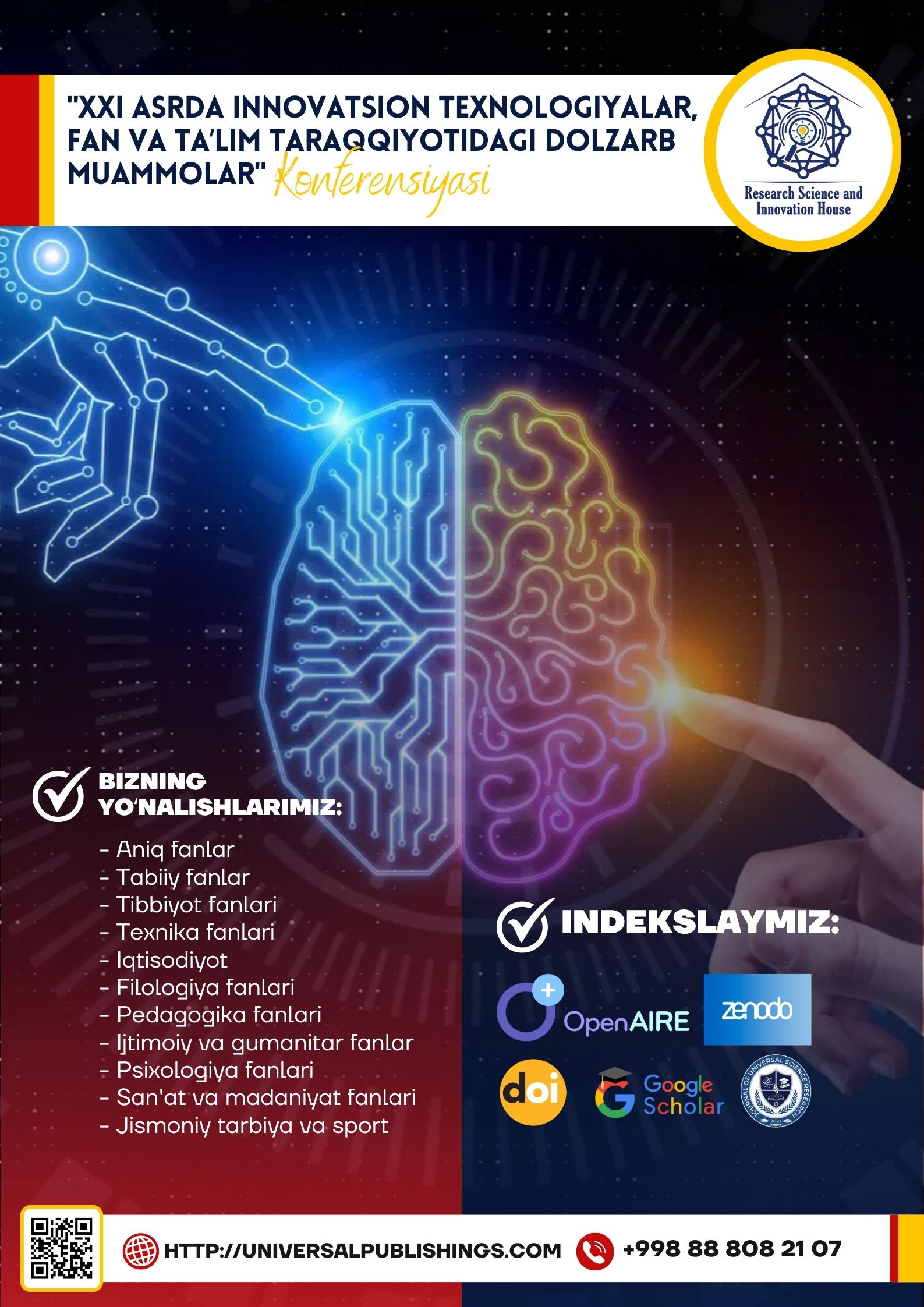Abstract
The article "Articulatory and Acoustic Features of Sounds: Speech Organs" provides a comprehensive overview of the anatomical structures involved in speech production and their functional roles in articulating sounds. It begins by categorizing the speech organs into three main systems: respiratory, phonatory, and articulatory, highlighting how each contributes to sound generation. The article details key organs such as the lungs, larynx, and tongue, explaining their specific functions in producing different speech sounds. It further explores articulatory features like place and manner of articulation, as well as voicing, which define how sounds are produced. Acoustic features such as frequency, amplitude, duration, and formants are also examined, emphasizing their importance in distinguishing speech sounds and conveying meaning. The interaction between articulatory and acoustic features is discussed, particularly the concept of coarticulation, which illustrates how sounds can influence one another in connected speech. Overall, the article underscores the complexity of speech production and its significance in linguistics, speech therapy, and artificial intelligence. It serves as a valuable resource for understanding the mechanics of human communication, providing insights into both the biological and acoustic dimensions of speech.
References
1. Anderson, A. H., & Bader, M. (2021). Speech production: An introduction to the mechanisms of spoken language. Cambridge University Press.
2. Baer, T., & Kirtman, B. P. (2019). "The Role of the Vocal Tract in Speech Production." Journal of Phonetics, 78, 1-18.
3. Clark, J., Yallop, C., & Fletcher, J. (2007). *An Introduction to Phonetics and Phonology. Wiley-Blackwell.
4. Fant, G. (1970). Acoustic Theory of Speech Production. Mouton & Co.
5. Johnson, K. (2012). Acoustic and Auditory Phonetics. Wiley-Blackwell.
6. Ladefoged, P., & Johnson, K. (2014). A Course in Phonetics. Cengage Learning.
7. Stevens, K. N. (1998). Acoustic Phonetics. MIT Press.
8. Teshaboyeva, N., & Mamayoqubova, S. (2020). COMMUNICATIVE APPROACH TO LANGUAGE TEACHING. In МОЛОДОЙ ИССЛЕДОВАТЕЛЬ: ВЫЗОВЫ И ПЕРСПЕКТИВЫ (pp. 409-414).
9. Teshaboyeva, N. (2020). LINGUISTIC PERSONALITY, ITS STRUCTURAL CHARACTERISTICS IN THE NEW PERSPECTIVE DIRECTIONS. In МОЛОДОЙ ИССЛЕДОВАТЕЛЬ: ВЫЗОВЫ И ПЕРСПЕКТИВЫ (pp. 415-420).
10. Teshaboyeva, N. Z. (2019). TEACHING ENGLISH THROUGH LITERATURE INTESL AND TEFL CLASSROOMS. In СОВРЕМЕННЫЕ ТЕХНОЛОГИИ: АКТУАЛЬНЫЕ ВОПРОСЫ, ДОСТИЖЕНИЯ И ИННОВАЦИИ (pp. 82-84).
11. Хидирова, Д., & Тешабоева, Н. (2022). Pedagogical conditions for the development of the healthy thinking in students. Zamonaviy innovatsion tadqiqotlarning dolzarb muammolari va rivojlanish tendensiyalari: yechimlar va istiqbollar, 1(1), 120-122.
12. Gaybullayeva, N. D. K., & Kizi, T. N. Z. (2022). THE ROLE OF INNOVATIVE METHODS FOR LISTENING COMPREHENSION IN TEACHING LANGUAGE LEARNERS FOREIGN LANGUAGES AND MAINLY ENGLISH. Central Asian Research Journal for Interdisciplinary Studies (CARJIS), 2(10), 8-10.
13. Teshaboyeva Nafisa Zubaydulla qizi, Jurayev Muhammadrahim Murod o’g’li, & Mamirova Munisa Rajab qizi. (2021). Language Learning Culturally and the Role of Literature in Teaching Process. Central Asian Journal of Theoretical and Applied Science, 2(3), 1-5. Retrieved from https://www.cajotas.centralasianstudies.org/index.php/CAJOTAS/article/view/84
14. Teshaboyeva, N. (2023). THE IMPORTANCE OF TOURISM IN PRESENT DAY. Журнал иностранных языков и лингвистики, 5(5).
15. Teshaboyeva, N. (2023). THE MODERN INNOVATIVE TECHNOLOGIES IN TEACHING FOREIGN LANGUAGES. Журнал иностранных языков и лингвистики, 5(5).
16. Teshaboyeva, N. Z. (2023, November). Adjective word group and its types. In " Conference on Universal Science Research 2023" (Vol. 1, No. 11, pp. 59-61).
17. Teshaboyeva, N. Z. (2023, November). Modifications of Consonants in Connected speech. In " Conference on Universal Science Research 2023" (Vol. 1, No. 11, pp. 7-9).
18. Teshaboyeva, N., & Rayimberdiyev, S. (2023, May). THE IMPORTANCE OF USING MULTIMEDIA TECHNOLOGY IN TEACHING ENGLISH CLASSES. In Academic International Conference on Multi-Disciplinary Studies and Education (Vol. 1, No. 8, pp. 149-153).
19. Nafisa, T., & Marina, S. (2023). TEACHING AND LEARNING OF ENGLISH VOCABULARY IN TESL AND TEFL CLASSROOMS. International Journal of Contemporary Scientific and Technical Research, 465-469.

